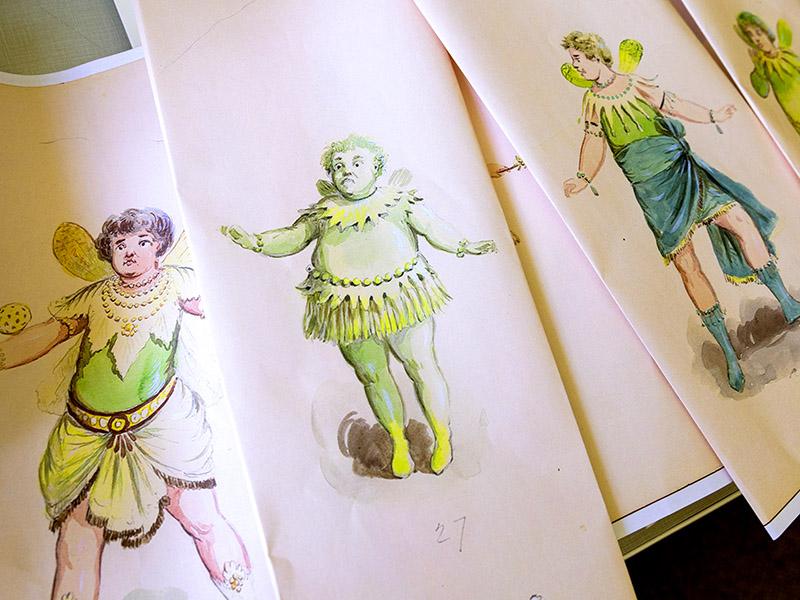Carnival Collection at Tulane presents a vibrant chronicle of history and culture
Tulane University archivist Leon Miller’s face lights up when he talks about the holdings in Tulane University’s Carnival Collection. But you won’t hear a mention of beads, cups or trinkets. When someone does try to donate throws to Tulane, he directs them to museums.
On the second floor of Jones Hall, home of the Carnival Collection, it’s all about paper — float and costume designs as well as what Miller refers to as paper ephemera, items intended to be looked at for a short period of time, then discarded. They include invitations, dance cards and other paper materials that Carnival krewes produce.
“Tulane has an important role to play in preserving the heritage of the city. And our collection reflects that."
Leon Miller, curator of Tulane Libraries’ Louisiana Research Collection
“We have by far the most outstanding collection in the world from the Golden Age of Carnival — original float and Carnival designs, amazingly beautiful works of art,” said Miller, curator of Tulane Libraries’ Louisiana Research Collection, part of the library’s Special Collections Division, which includes the Carnival Collection.
“One of the things about the Carnival float and costume designs is that they are so full of life, with so much color,” he said. “There’s one that’s completely monochromatic. It’s just green. It’s this little green man. He’s got green legs, green hair, green face paint, green hands. And he looks kind of worried.”
It turns out that he is one of five green peas in a pea pod being attacked by giant caterpillars. Dating back to 1892, it is one of 98 individual costume designs that the artist made for that krewe’s 98 riders. “That’s a level of creativity we can hardly imagine today,” Miller said.
In addition to the materials stored at Jones Hall, the collection includes an online component that features more than 5,600 original float and costume designs from the 1870s through the 1940s, with about 300 designs from 1950 to 1970. Included are artworks from many of Carnival’s most noted designers, including Jennie Wilde, Bror Anders Wikstrom and Charles Briton.
As an acquisitions archivist, Miller works to continually expand the collection to include more contemporary designs and printed materials. He works with donors, both for the Carnival collection and the Louisiana Research Collection in general.
“I try to find out what researchers need, what they would like to use, and then I try to acquire those materials,” he said. “We have a very good relationship with many krewes who every year send us that year's invitation, that year's call-out card or dance card. We try to keep the collection up to date.”
The collection has indeed evolved, and in addition to designs dating back to the founding of Carnival, it includes contemporary holdings from such clubs as Barkus, Zulu, Satyricon, Petronius and the Original Illinois Club.
While both the online and on-campus collections are available to the general public free of charge, Miller suggests making an appointment to view any of the holdings at Jones Hall. “We want you to come in. We want you to feel welcome. And we want you to feel comfortable when you use our holdings.”
That openness is part of Tulane’s commitment to the wider New Orleans community. “Tulane has an important role to play in preserving the heritage of the city,” he said. “And our collection reflects that. It’s a collection that preserves the accomplishments of the city and its citizens. And it’s a way for Tulane to spread the importance of New Orleans around the world.”

